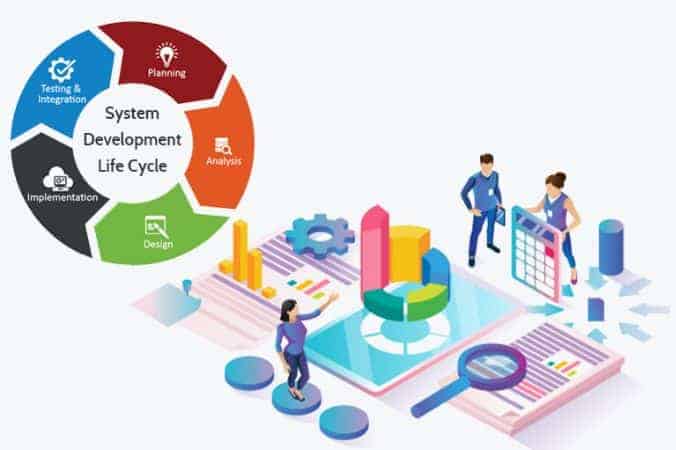
System Development Life Cycle or SDLC is a multistep, iterative process that helps to transform a newly developed project into an operative one in a methodical way.
This process is used to provide a framework to deliver quality system that meets or even exceeds business expectations. Furthermore, it can also assist in decision making processes.
Primarily, there were only five phases in the system development life cycle, but two additional phases were added to help the system analysts to achieve specific goals by having clearer actions.
The SDLC approach is used so that each and every user can understand what activities are involved in each step and also that these steps can be repeated and reworked when needing to change or improve the system.
It is the first phase of the system development process where it identifies if a new system is needed or not to achieve the desired objective. This phase is a type of feasibility study for an organization’s business initiative to acquire in order to build an infrastructure to improve or modify a service.

Furthermore, by considering the costs, benefits, time, and resources, a company finds out about the scope of the problem as well as determines the solutions in this phase of SDLC.
This is the phase where the company will work on the need for the change or the source of the problem. If there is a problem, possible solutions are gathered and analyzed to find the best-fit for the project.
The second phase of the system development life cycle is also the point where system analysis takes place and the functional requirements of the project are also considered.
This is a vital phase in the system development process as the needs of the business are analyzed along with how they can be met, responsibilities of individuals in the project and also the project timeline is determined.
The third phase is where the features, specifications and operations that are necessary for the functional requirements of the proposed system are described in detail.
This is the phase where the end users will discuss and determine the essential hardware and software structure, the networking capabilities, processing and procedures for the system.
This is the phase of the system development life cycle where the actual work begins. Initially, a flowchart is created to ensure the organization of the process of the system.
Additionally, the development phase marks the initiation of the second section of the project. Also, it also signifies the start of production.
To make the most of this phase, you can start focusing on training during this phase.
The system integration and system testing are done in the fifth phase of the system development life cycle. This phase is normally carried out by Quality Assurance professionals to determine if the proposed design meets the initial business goals.

The testing is continued until the end-user finds it acceptable and it may be repeated to check for interoperability, errors, and bugs. Additionally, validation and verification are also done during this phase ensuring the program’s successful completion.
It is in this phase where the majority of the code is written. Furthermore, this is also the phase where the actual installation of the new system is done.
This is the phase where where the data and components from the old system are moved to the new one.
The final phase of the System Development Life Cycle, this is the phase where end users can fine-tune the system. In addition to this, new features can also be added to the system to meet the additional user requirements if necessary.
Sign up to stay updated with the latest insights, news, and more.